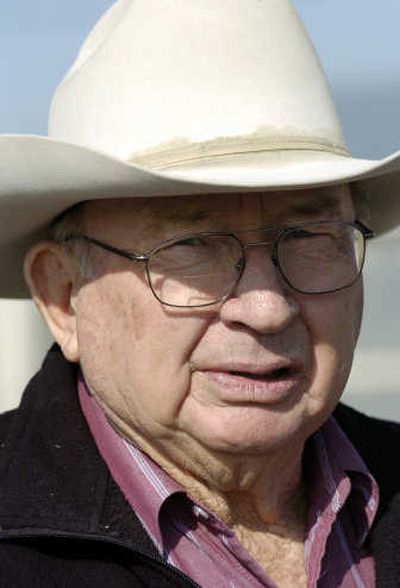Large-animal veterinarians hard to find

CONNELL, Wash. – Bill Bennett has spent 45 years feeding and herding 2,500 cattle on his rolling Eastern Washington ranch. He’s also had to act as a doctor because he’s unable to find a veterinarian who will come to his rural spread.
He’s not alone, as farmers and ranchers across the country complain of a shortage of large-animal veterinarians. A federal program created in 2003 to help the situation sits dormant while the U.S. Department of Agriculture writes rules.
In addition to caring for livestock and pets, veterinarians monitor and inspect a large portion of the food supply and work as disease researchers. Food safety experts fear that public health is being endangered by the shortage.
Many states recognize the critical need and are approving or considering bills to provide tuition reimbursement or scholarships to veterinarians who agree to work in underserved areas. Those states include Washington, where Bennett has been championing rural veterinary care for years.
“I can’t get a vet to save my life. I’ve tried for years to get one to move in here and start a practice, and they don’t want to do it. They want to do bigger cities and small animals,” Bennett said. “I complain about them spending all our money educating dog and cat doctors.”
Recent studies for the American Veterinary Medical Association indicate that demand for veterinarians nationally will increase by as much as 14 percent by 2016 but the shortfall will remain 4 percent to 5 percent annually. About 2,500 veterinarians graduate from the nation’s 28 veterinary schools each year; that number hasn’t grown for at least a couple of decades.
The seriousness of the shortage was highlighted by the recent recall of 143 million pounds of beef from a Chino, Calif., slaughterhouse. The recall launched a series of congressional hearings and close scrutiny of the USDA’s meat and poultry inspection system.
The USDA has said it is short about 500 inspectors.
With veterinarians monitoring a huge amount of the food supply, “it’s not like the remaining veterinarians can pick up the slack,” said David Kirkpatrick, spokesman for the American Veterinary Medical Association at Schaumburg, Ill. “We’re seeing more and more states taking steps to address the situation.”
According to the National Conference of State Legislatures, eight states have implemented loan forgiveness programs for veterinarians who work in underserved areas. Eight others are considering similar programs.
Vets tend to gravitate toward small-animal care because ranchers will often choose to slaughter a sick or injured animal rather than pay for expensive treatment, while a pet owner will spend heavily to save a treasured friend, said Warwick Bayly, dean of Washington State University’s College of Veterinary Medicine. “When you balance the needs for simple, day-to-day living plus repayment of sizable student loans, the debt often exceeds what you can expect to make in an agricultural area. It’s just simple math,” he said. “But that shouldn’t be interpreted that people aren’t interested.”